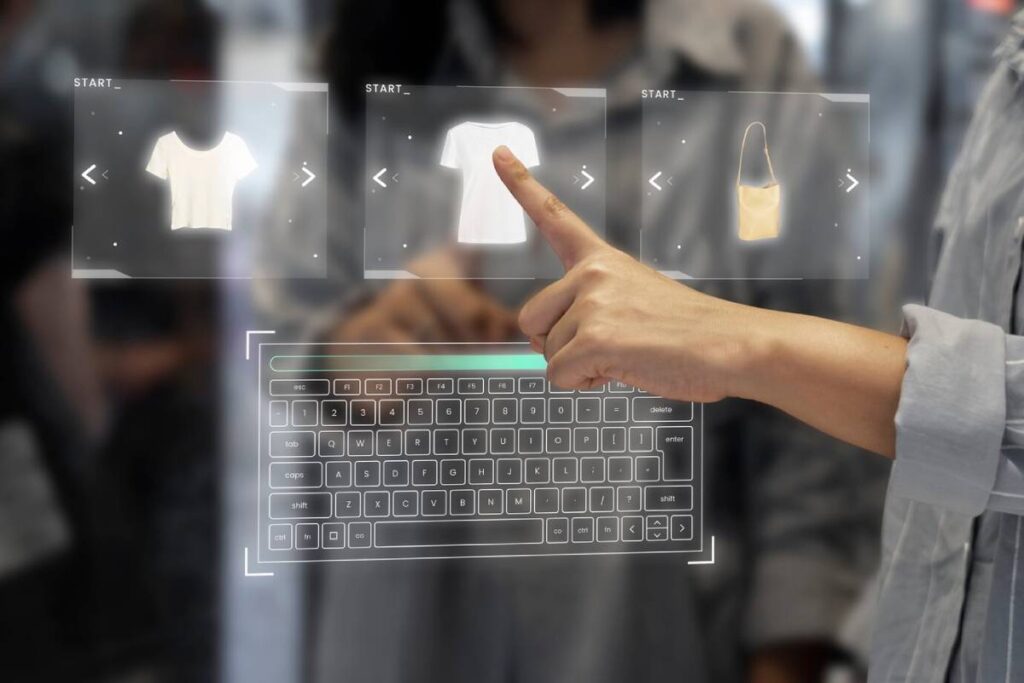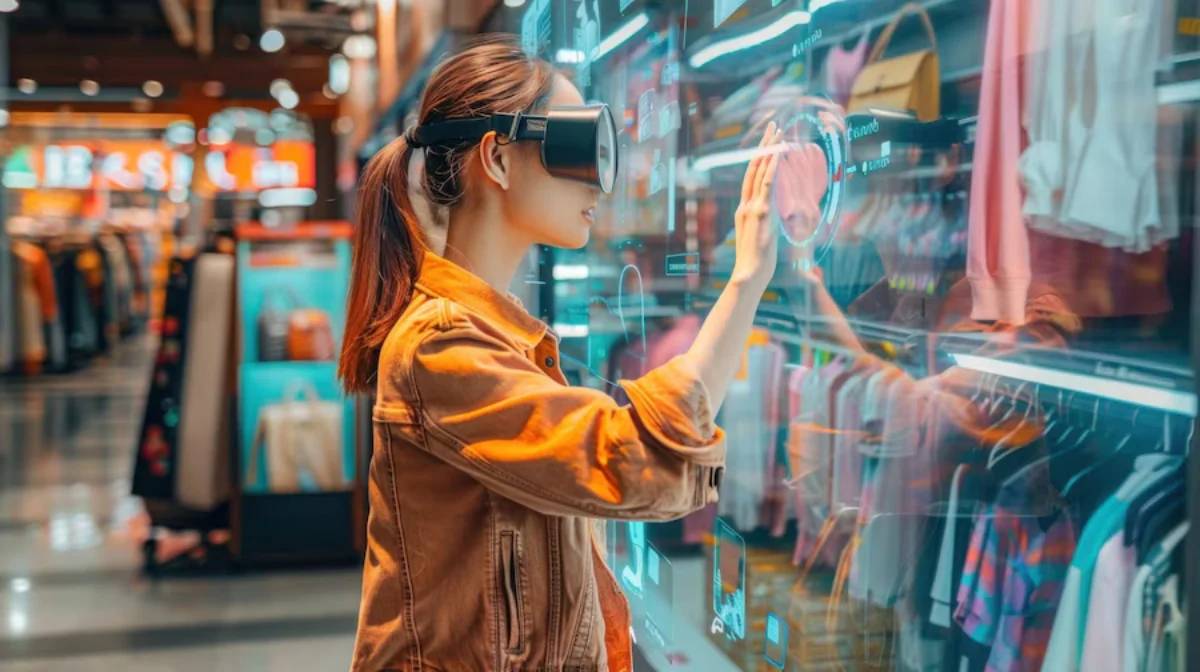The E-commerce Blog

Combining AR and VR for Immersive Retail Campaigns
Today, technology is key for retailers. It helps companies innovate and connect with customers. In fact, AR and VR are two of the most transformative technologies. They’re transforming the way consumers interact with brands. And combining AR and VR for retail is not just an imaginary concept. It’s a fact that adds to the shopping experience today. In this blog, we will discuss how AR and VR are transforming the retail industry. They create fun online shopping experiences. They also affect the future of shopping tech in virtual stores.
Retailers are always searching for strategies that will make their audience take a second glance. Immersive technologies, however, offer a unique opportunity to deliver engaging, interactive experiences. Picture a virtual store. You can virtually try on clothes without all the fuss. Or use your smartphone to visualise how furniture would look in your living room. This is no longer hypothetical. They are the future of retail marketing strategies. Many people still think these technologies are hard and costly to use. This blog aims to dispel those myths and highlight the tangible benefits AR and VR bring to retail campaigns.
Key Benefits / Why It Matters
Enhancing Customer Engagement

One of the primary benefits of combining AR and VR in retail is the significant boost in customer engagement. Traditional shopping experiences are often passive, with customers limited to browsing and purchasing. However, with AR and VR, shopping becomes an interactive and engaging activity. AR apps let customers see products in their space before buying. VR offers an immersive shopping experience. Customers can explore virtual stores right from home.
Personalised Shopping Experiences
AR and VR technologies enable retailers to offer highly personalised shopping experiences. Retailers can analyse customer data to create virtual environments. These spaces cater to each person’s preferences and needs. A virtual shopping platform can suggest products based on what a customer bought or viewed before. It shows these items in a virtual showroom that matches their style and taste. This level of personalisation makes shopping better and boosts the chances of conversion.
Bridging the Gap Between Online and Offline Shopping
The integration of AR and VR in retail effectively bridges the gap between online and offline shopping. Online shopping is convenient, but it misses the hands-on feel of shopping in a store. AR and VR technologies can bring this experience to life online. Customers can explore and interact with products in a virtual space. AR lets customers use their smartphone camera to see how a product looks in real life. VR, on the other hand, simulates an in-store experience. Customers can walk through aisles and examine products closely.
Building Stronger Brand Connections
Immersive retail campaigns powered by AR and VR can help brands build stronger connections with their customers. Brands can create memorable experiences. This fosters emotional connections that go beyond simple transactions. A brand can use VR to offer a virtual tour of its production process. This lets customers see how their favourite products are made. This transparency can build trust and loyalty, encouraging customers to become brand advocates.
Real-Life Applications and Data-Backed Insights
Many retailers have used AR and VR in their campaigns. This shows how well these technologies work. IKEA’s AR app helps customers see how furniture looks in their homes. This leads to happier customers and fewer returns. Fashion retailers like ASOS have also used VR for virtual fashion shows. This lets customers enjoy the thrill of a runway show from home. AR and VR can change retail. They help us understand customer likes and habits through data.
Additional Expert Tips & Common Mistakes to Avoid
Best Practices for Implementing AR and VR in Retail
To use AR and VR in retail campaigns, follow best practices. This will help create a smooth and engaging customer experience. One key consideration is ensuring that the technology is user-friendly and accessible. Retailers should focus on making user-friendly interfaces. This helps customers navigate and interact with virtual environments easily. It’s also important to include AR and VR in the brand strategy. This helps make sure the immersive experiences match the brand’s identity and message.
Common Mistakes and Misconceptions
A common myth about AR and VR in retail is that they are too costly and complicated to use. While it is true that some initial investment is required, the long-term benefits often outweigh the costs. Retailers should also avoid the mistake of using AR and VR as mere gimmicks. These technologies should fit into the customer journey. This way, they improve the shopping experience instead of just being cool gadgets.
The Impact of Poorly Executed AR and VR Campaigns
Poorly executed AR and VR campaigns can have a negative impact on customer perception and brand reputation. If a virtual shopping tech platform is slow or hard to use, customers might get frustrated and leave. Low-quality AR or VR content can upset customers. If it doesn’t show products accurately, it may also cause higher return rates. To avoid these issues, retailers should focus on quality and usability in their AR and VR setups.
Advanced Insights / Expert Recommendations
Staying Ahead of the Curve
Retailers need to keep innovating. They should also find new ways to use AR and VR technologies to stay ahead of their competition. This may include trying out new technologies like mixed reality. Mixed reality blends AR and VR to offer more immersive experiences. Retailers should watch industry trends and consumer preferences. They need to adapt their strategies to meet changing demands. Retailers can stay relevant and effective by being informed and proactive.
Collaborating with Technology Partners
Retailers wanting to use AR and VR should partner with tech experts. Technology partners provide capabilities and resources that retailers may not possess. This assistance makes the creation and launch of immersive experiences simpler. It can assure superior quality AR and VR for retailers by partnering with the right partners. Doing so will also ensure that their implementations conform to industry best practices.
Leveraging Data for Continuous Improvement
It is a challenge for retailers to run effective AR and VR campaigns, and data is the key to optimising these campaigns. However, be aware that retailers can learn from customer interaction and feedback. This allows them to see what works — and what doesn’t. That way, they can continue to hone their immersive experiences. Retailers can track data to identify the top-selling products and features in a virtual store. Then they can tune their offerings and improve customer satisfaction.
Conclusion: Sustainability Metrics — The Future of E-commerce Success

In conclusion, AR and VR technologies provide many chances for retailers. They can create engaging and personalised shopping experiences that immerse customers. Retailers can use these technologies to boost customer engagement. They can also strengthen brand connections and link online and offline shopping.
To fully realise the potential of AR and VR, retailers need to:
- Follow best practices
- Avoid common pitfalls
- Innovate continuously
Doing this helps them stay ahead of the competition.
As the retail landscape continues to evolve, it is essential for retailers to adapt and explore new ways to connect with their customers. Investing in AR and VR technologies helps retailers improve the shopping experience. It also lets them stand out as leaders in the industry. So, are you ready to take your retail campaigns to the next level with AR and VR? The future of retail is here, and it’s time to embrace the possibilities.









